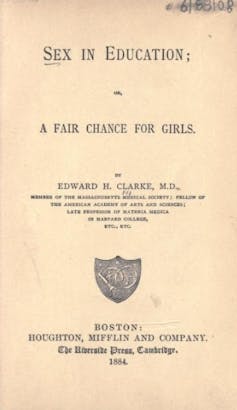
The British journal Nature was founded in 1869 and is one of the world’s most influential and prestigious outlets for scientific research. Its publisher, Nature Portfolio (a subsidiary of the academic publishing giant Springer Nature), also publishes dozens of specialised journals under the Nature banner, covering almost every branch of science.
In August, the company published new ethics guidance for researchers. The new guidance is part of Nature’s “attempt to acknowledge and learn from our troubled deep and recent past, understand the roots of injustice and work to address them as we aim to make the scientific enterprise open and welcoming to all”.
An accompanying editorial argues the ethical responsibility of researchers should include people and groups “who do not participate in research but may be harmed by its publication”.
It also notes that for some research, “potential harms to the populations studied may outweigh the benefit of publication”, and licenses editors to make such determinations. Editors may modify, amend or “correct” articles post-publication. They may also decline to publish, or retract, objectionable content or articles, such as “[s]exist, misogynistic and/or anti-LGBTQ+ content”.
The guidance is correct to say academic freedom, like other freedoms, is not absolute. It’s also legitimate to suggest science can indirectly harm social groups, and their rights may sometimes trump academic freedom. Despite this, some aspects of the new guidance are concerning.
When science goes wrong
There’s no doubt science can cause harm, both for its subjects and other groups. Consider an example from the late 19th century.
Harvard professor Edward Clarke proposed that taking part in higher education would cause fertility problems in women, because energy would be diverted from the reproductive system to the brain.

Clarke’s account, set out in a bestselling book, has been credited with deepening public opposition to universities opening their doors to women.
At first glance, this seems like exactly the kind of objectionable content that Nature’s new guidance says it would seek to amend or retract.
But the problem with Clarke’s account was not the offensive conclusions it drew about women’s capacity for intellectual development, or the discriminatory policies to which it gave support.
After all, suppose he had been right? If attending university really would harm women’s reproductive health, surely they would want to know.
The real problem with Clarke’s work was that it was bad science. Indeed, historian of science Naomi Oreskes has noted:
Feminists in the late nineteenth century found Clarke’s agenda transparent and his non-empirical methodology ripe for attack.
So drawing a particular kind of conclusion about women and girls isn’t what makes for sexist content in science. Nor is it favouring one side or another on gender-related policies. So what is it?
One answer is that it is science in which gendered assumptions bias scientists’ decisions. In the words of historian and philosopher of science Sarah Richardson, this is science in which:
gendered practices or assumptions in a scientific field prevented researchers from accurately interpreting data, caused inferential leaps, blocked the consideration of alternative hypotheses, overdetermined theory choice, or biased descriptive language.
Language and labels
The guidance also stipulates scientists should “use inclusive, respectful, non-stigmatizing language”. This merits pause for thought.
Scientists should certainly be thoughtful about language, and avoid causing unnecessary offence, hurt or stigma. However, the language must also be scientifically useful and meaningful.
Read more: What's at risk if scientists don't think strategically before talking politics
For example, it is the nature of categories that some entities or individuals are excluded from them. This should be based on scientific criteria, not political ones.
Or consider the following, offered as part of working definitions in the guidance:
There is a broad range of gender identities including, but not limited to, transgender, gender-queer, gender-fluid, non-binary, gender-variant, genderless, agender, nongender, bi-gender, trans man, trans woman, trans masculine, trans feminine and cisgender.
People should of course be able to identify with whatever gender label they prefer. However, “gender identity” is a vague and contested concept, and these labels (and their meanings) are subjectively defined and continue to change rapidly over time.
Labels that are personally meaningful, deeply felt or – as in some cases – part of a political project to dismantle gender binaries, may not necessarily be scientifically useful.
An invitation to politicking
By casting a wide range of content as potentially subject to editorial intervention or veto on the grounds of harm, the guidance opens the door to the politicisation of science. Other material caught in that net is:
content that undermines – or could reasonably be perceived to undermine – the rights and dignities of an individual or human group on the basis of socially constructed or socially relevant human groupings.
But scientists often do research providing information used to make policies, which will include the bestowing of various rights. The findings of such research can therefore sometimes be unpalatable to groups with economic, political, religious, emotional or other vested interests.
Read more: Getting a scientific message across means taking human nature into account
The guidance opens the door for such groups to try to have findings contrary to those interests “corrected” or retracted. There is not much that can’t be framed as a right, a harm, or an infringement of dignity – all notoriously difficult concepts to define and reach consensus on.
What will determine who is successful in their attempt to have articles amended or retracted? Potential harms will be assessed by journal editors and reviewers – and they will perceive these through the lens of their own prior assumptions, ideologies and value systems.
Editors may also face pressure to avoid tarnishing their journal brand, either in response to, or in anticipation of, social media mobs. After all, Springer Nature ultimately answers to its shareholders.
The responsibility of editors
As we know from the work of feminist and other critical scholars, scientific claims based on biased research have harmed marginalised groups in many ways: by explaining away group inequalities in status, power and resources; pathologising; stigmatising; and justifying denial of rights.
There is no contradiction between acknowledging these harms, and also having concerns about the new Nature guidance.
Science journals have an important role to play in facilitating socially responsible science in these sensitive areas.
Journal editors should certainly do all they can to discover and scrutinise hidden biases embedded in research, such as by commissioning reviews from experts with different or critical perspectives. However, they should not second-guess what scientific claims will cause social harm, then exercise a veto.
Cordelia Fine does not work for, consult, own shares in or receive funding from any company or organisation that would benefit from this article, and has disclosed no relevant affiliations beyond their academic appointment.
This article was originally published on The Conversation. Read the original article.







